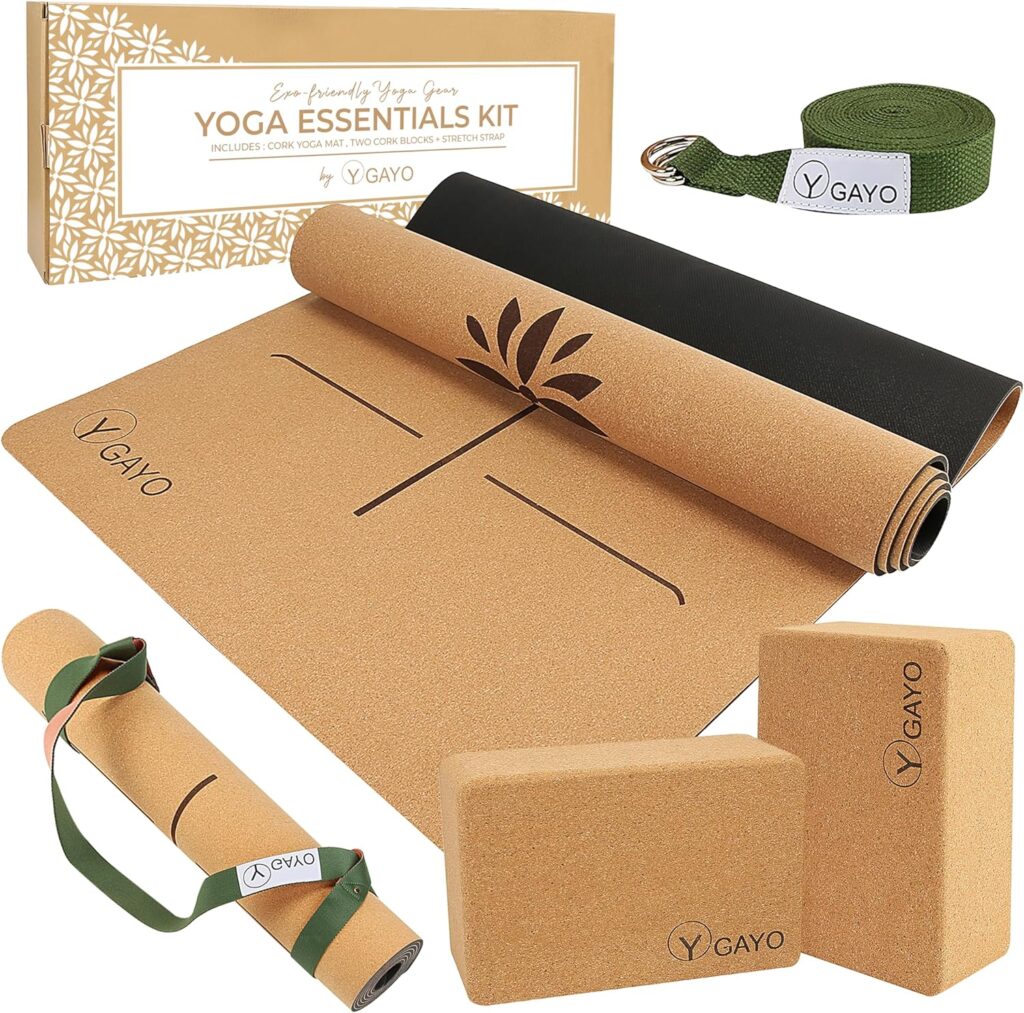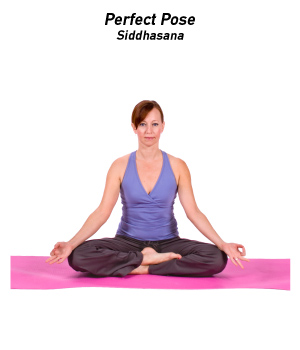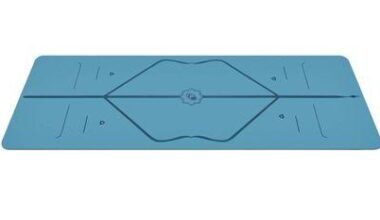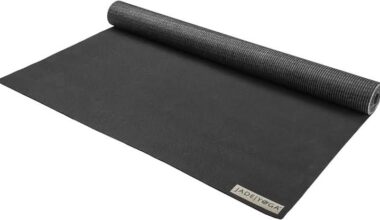Table of Contents Show
Key Takeaways:
- Learn the correct alignment and technique for the perfect yoga pose.
- Discover the benefits of Siddhasana, including improved flexibility and core strength.
- Follow detailed instructions for practicing Siddhasana, including modifications and variations.
- Avoid common mistakes in Siddhasana and achieve proper pose alignment.
- Understand how Siddhasana can enhance your pranayama and meditation practice.

The Benefits of Perfect Pose
Siddhasana, also known as Perfect Pose, offers a multitude of benefits that contribute to a well-rounded yoga practice. This seated posture stretches the hips, knees, and ankles, promoting increased flexibility in these areas. By engaging the core muscles, including the abdomen and back, Siddhasana strengthens the body, providing stability and support. Proper posture and alignment in this pose are essential for achieving the perfect balance in yoga poses. One of the key advantages of Siddhasana is its capacity to balance the activities of the reproductive organs and regulate hormone production. This can be particularly beneficial for individuals looking to maintain hormonal harmony within their bodies. Moreover, Siddhasana is believed to cleanse and purify the energy channels known as “nadis,” facilitating the optimal flow of vital energy throughout the body. Embracing the Perfect Pose not only supports physical well-being but also enhances mental focus and relaxation. The stable foundation provided by Siddhasana makes it an ideal posture for meditation and deep breathing exercises. With a straight spine and centered gaze, practitioners can attain a state of calm and tranquility, allowing thoughts to settle and the mind to quiet. By incorporating Siddhasana into your yoga practice, you tap into a myriad of benefits that encompass flexibility, strength, balance, and overall well-being. Embrace the Perfect Pose and experience the transformative power it has to offer.Instructions for Siddhasana
To practice Siddhasana, follow these steps:- Sit on the floor with your legs extended and your spine straight.
- Bend your left knee and bring your left heel towards your groin area, resting it along the perineum.
- Bend your right leg and place your right, outer ankle over the inner ankle of your left foot, resting your right heel at the top of the pubic bone.
- You can choose to place your hands on your thighs or in a specific mudra that feels comfortable to you.
- Maintain a straight spine, keeping your chin parallel to the floor and gaze inward.
- Hold the pose for up to one minute or for the duration of your meditation or breathing exercises.
- If you have tight hips or discomfort, you may need to modify the pose with props or alternative sitting positions.
Modifications and Variations of Siddhasana
When practicing Siddhasana, it’s important to remember that every body is unique, and modifications can be made to accommodate different levels of flexibility and comfort. These modifications can help ensure proper alignment and pose execution, allowing you to maximize the benefits of the pose. Here are some modifications and variations of Siddhasana:1. Supportive Props:
If you have tight hips or experience discomfort while sitting in Siddhasana, using supportive props can provide additional comfort and stability. Sitting on a folded blanket or bolster can relieve pressure on the hips, knees, and back, allowing you to maintain the pose for longer durations. This modification is especially beneficial for beginners or individuals with limited flexibility.2. Back Support:
To alleviate any strain on the back and maintain an upright posture, you can sit with your back against a wall. This provides support and helps prevent slouching or collapsing the chest. Alternatively, placing a yoga block between the wall and your shoulder blades can offer additional support and encourage proper alignment throughout the pose.3. Easy Pose (Sukhasana):
If Siddhasana feels too challenging or uncomfortable, practicing Easy Pose (Sukhasana) is a great alternative. Sukhasana is a cross-legged sitting posture that allows you to gradually build the necessary flexibility and strength for Siddhasana. Start by sitting with crossed legs and gradually work towards the more intricate leg positioning in Siddhasana. It’s essential to listen to your body and work within your personal limits and abilities. As you progress in your practice, you can gradually explore advanced variations of Siddhasana to deepen your understanding of the pose and enhance your yoga practice.Tips for How to Do the Perfect Pose in Yoga
When practicing Siddhasana, it is crucial to pay attention to proper alignment and posture. Here are some helpful tips to achieve the perfect balance in yoga poses:- Change the cross of your legs: Alternate between crossing the left leg over the right and the right leg over the left. This helps maintain balance and ensures equal stretching on both sides of the body.
- Hold the pose evenly: Aim to hold Siddhasana for the same duration on each side. Balancing the time spent in the pose prevents muscle imbalances and promotes symmetry in the body.
- Align the ankles correctly: The outer ankle of the top foot should rest comfortably on top of the inner ankle of the bottom foot. This alignment provides a stable base for the pose.
Common Mistakes to Avoid in Siddhasana
When practicing Siddhasana, it’s important to be aware of common mistakes that can hinder your progress and pose alignment. By avoiding these errors, you can ensure a more effective and safe yoga practice.Lifting the knees too far up
One common mistake is lifting the knees too far up when placing the second leg on top. This can lead to discomfort and improper alignment. To avoid this, focus on keeping the knees relaxed and closer to the ground without forcing the arrangement of the legs.Slouching the shoulders and collapsing the chest
Maintaining an upright posture with a straight spine is crucial for the success of Siddhasana. Slouching the shoulders and collapsing the chest can disrupt the alignment and limit the benefits of the pose. Concentrate on keeping the shoulders relaxed and drawing the chest forward to maintain a proud yet comfortable posture.Ankle discomfort
Many practitioners experience ankle discomfort while practicing Siddhasana. This can be alleviated by using a folded blanket or sponge for support. Placing it underneath the ankles can reduce pressure and make the pose more comfortable.Numbness or tingling in the legs
It’s important to be mindful of any numbness or tingling sensations in the legs during Siddhasana. This could indicate compromised blood circulation or nerve impingement. If you experience these sensations, gently massaging the legs and adjusting your position can help relieve the discomfort and prevent any potential issues.“Avoiding these common mistakes will help you achieve proper alignment and maximize the benefits of Siddhasana in your yoga practice.”By being aware of these common mistakes and making the necessary adjustments, you can enhance your practice of Siddhasana and avoid potential injuries. The key is to approach the pose with mindfulness, patience, and proper alignment.
Siddhasana for Pranayama and Meditation
Siddhasana is a highly recommended pose for those looking to deepen their pranayama (breathing exercises) and meditation practice. Not only does it provide physical stability, but it also supports an upright posture with a flat back and a free-flowing spine, allowing for a comfortable and focused practice. The energy flow in Siddhasana is directed from the lower body upward through the spine, facilitating deep and powerful breaths. This controlled breathing technique helps ground the practitioner and reduces stress levels, making it an ideal pose for meditation. One of the unique aspects of Siddhasana is its ability to be held for long periods of time, perfectly suiting it for deepening the practice of pranayama and meditation. By gradually increasing the duration of the pose, you can experience a heightened sense of focus and tranquility. To fully benefit from Siddhasana for pranayama and meditation, it is important to take a conservative approach. Start with shorter durations and gradually extend the time as your body and mind become more comfortable in the pose. Siddhasana is truly a masterful pose that can transform your yoga practice, allowing for a more profound connection with your breath and inner self.Conclusion
The Perfect Pose, Siddhasana, is a highly beneficial seated yoga posture that offers a multitude of advantages for practitioners of all levels. By regularly incorporating this pose into your yoga practice, you can experience improvements in flexibility, balance, and relaxation. Siddhasana stretches the hips, strengthens the core muscles, and serves as a stable foundation for meditation and deep breathing exercises. Whether you are a beginner or an advanced yogi, this pose can enhance your overall well-being. Modifications and variations of Siddhasana can be adopted to accommodate different body types and levels of flexibility. It is crucial to maintain proper alignment and posture while practicing this pose, and to be aware of common mistakes to avoid. By dedicating yourself to the regular practice of Siddhasana, you can master advanced yoga poses while reaping the vast rewards it offers to the mind, body, and spirit. Start your journey today and unlock the transformative benefits of this incredible yoga posture.FAQs
Q1. What is the Perfect Pose in yoga?
A: The Perfect Pose, also known as Siddhasana, is a seated yoga posture traditionally used for meditation and breathing exercises.
Q2. What are the benefits of the Perfect Pose?
A: Siddhasana stretches the hips, knees, and ankles, strengthens the core muscles, and helps regulate hormone production. It also provides a stable foundation for meditation and deep breathing, enhancing focus and relaxation.
You May Also Like: 6 Steps to Perfect How to Do One-Legged King Pigeon Pose in Yoga
Q3. How do I perform Siddhasana?
A: To practice Siddhasana, sit on the floor with legs extended and spine straight. Bend the left knee and bring the left heel towards the groin area, resting it along the perineum. Bend the right leg and place the right, outer ankle over the inner ankle of the left foot, resting the right heel at the top of the pubic bone. The hands can be placed on the thighs or in a specific mudra.
Q4. Can Siddhasana be modified for different body types?
A: Yes, Siddhasana can be modified by using props like folded blankets or bolsters for support. Individuals with tight hips or discomfort can also try sitting with their back against a wall or using a yoga block between the wall and the shoulder blades for additional support.
Q5. What are some tips for practicing Siddhasana?
A: It is important to maintain proper alignment and posture by not forcing the pose or overdoing it. Slow and patient progress is key, and consistency in practice, even for just a minute a day, will lead to greater benefits. It may take time to find comfort in Siddhasana, but regular practice will bring deep relaxation.
Q6. What are common mistakes to avoid in Siddhasana?
A: Some common mistakes to avoid in Siddhasana include lifting the knees too far up when placing the second leg on top, slouching the shoulders and collapsing the chest, and ignoring ankle discomfort. It is important to listen to the body, maintain an upright posture with a straight spine, and address any discomfort or numbness in the legs.
Q7. Can Siddhasana be used for pranayama and meditation?
A: Yes, Siddhasana is recommended for pranayama and meditation. It provides physical stability, supports an upright posture, and facilitates deep and focused breath. Siddhasana can be held for long periods of time to deepen the practice of pranayama and meditation.
Q8. What should I keep in mind when practicing the Perfect Pose?
A: When practicing Siddhasana, it is important to focus on proper alignment, posture, and gradual progression. It is also important to work within personal limits and abilities and not force the pose. Regular practice of Siddhasana can lead to improved flexibility, balance, and relaxation.




